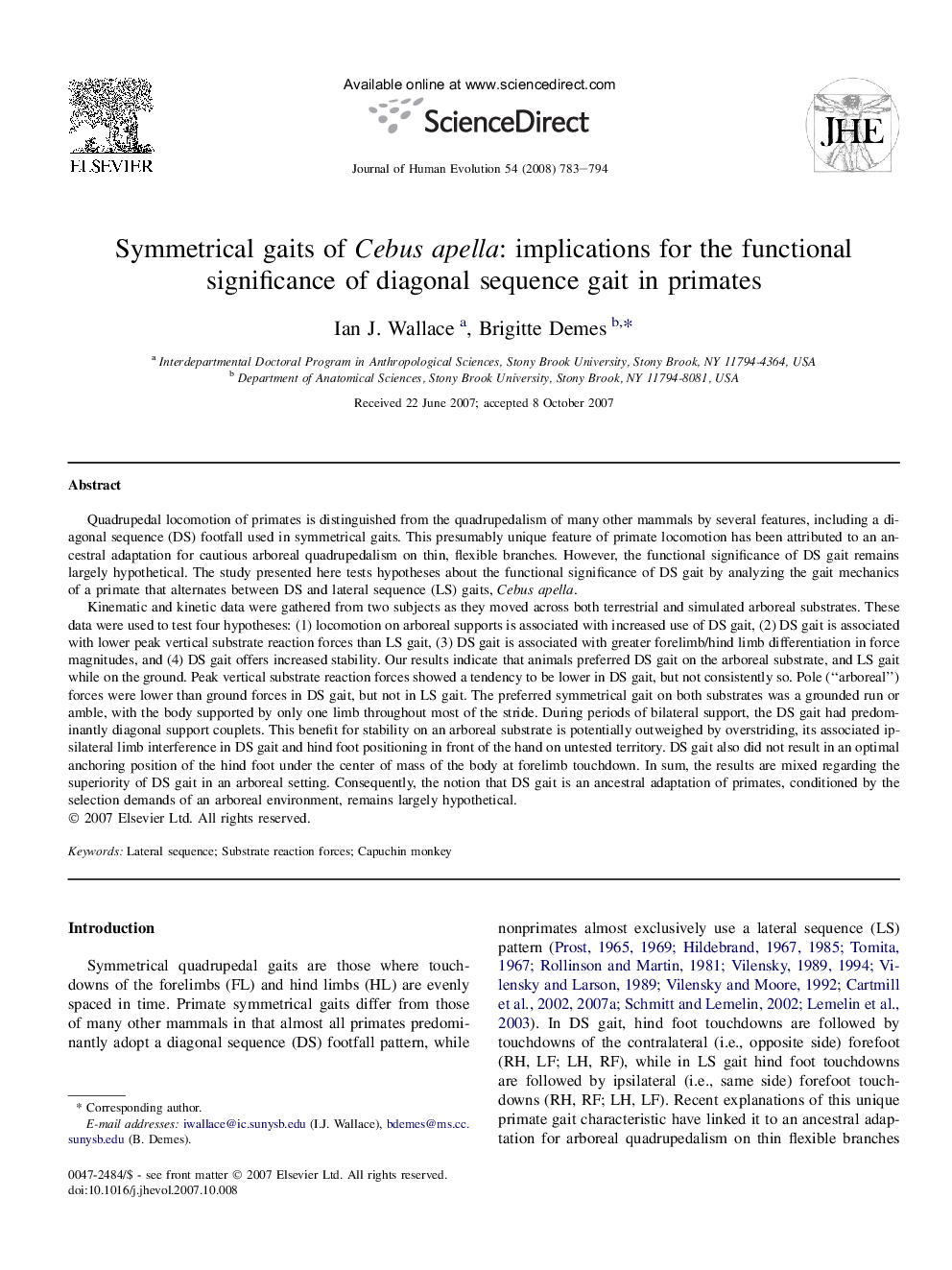| کد مقاله | کد نشریه | سال انتشار | مقاله انگلیسی | نسخه تمام متن |
|---|---|---|---|---|
| 4557124 | 1329528 | 2008 | 12 صفحه PDF | دانلود رایگان |

Quadrupedal locomotion of primates is distinguished from the quadrupedalism of many other mammals by several features, including a diagonal sequence (DS) footfall used in symmetrical gaits. This presumably unique feature of primate locomotion has been attributed to an ancestral adaptation for cautious arboreal quadrupedalism on thin, flexible branches. However, the functional significance of DS gait remains largely hypothetical. The study presented here tests hypotheses about the functional significance of DS gait by analyzing the gait mechanics of a primate that alternates between DS and lateral sequence (LS) gaits, Cebus apella.Kinematic and kinetic data were gathered from two subjects as they moved across both terrestrial and simulated arboreal substrates. These data were used to test four hypotheses: (1) locomotion on arboreal supports is associated with increased use of DS gait, (2) DS gait is associated with lower peak vertical substrate reaction forces than LS gait, (3) DS gait is associated with greater forelimb/hind limb differentiation in force magnitudes, and (4) DS gait offers increased stability. Our results indicate that animals preferred DS gait on the arboreal substrate, and LS gait while on the ground. Peak vertical substrate reaction forces showed a tendency to be lower in DS gait, but not consistently so. Pole (“arboreal”) forces were lower than ground forces in DS gait, but not in LS gait. The preferred symmetrical gait on both substrates was a grounded run or amble, with the body supported by only one limb throughout most of the stride. During periods of bilateral support, the DS gait had predominantly diagonal support couplets. This benefit for stability on an arboreal substrate is potentially outweighed by overstriding, its associated ipsilateral limb interference in DS gait and hind foot positioning in front of the hand on untested territory. DS gait also did not result in an optimal anchoring position of the hind foot under the center of mass of the body at forelimb touchdown. In sum, the results are mixed regarding the superiority of DS gait in an arboreal setting. Consequently, the notion that DS gait is an ancestral adaptation of primates, conditioned by the selection demands of an arboreal environment, remains largely hypothetical.
Journal: Journal of Human Evolution - Volume 54, Issue 6, June 2008, Pages 783–794